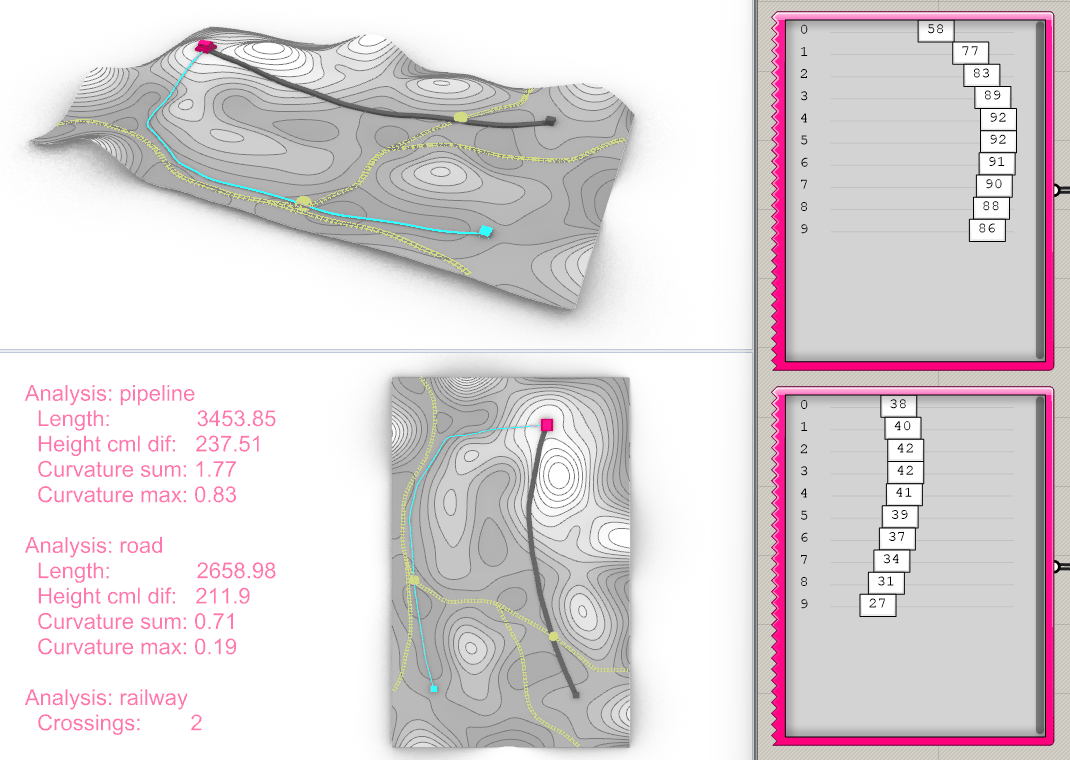
The integrated parametric model consists of a combination of the individual models. To enable the integration, the focus of each model had to be shifted from the individual engineering challenge to the newly determined context. Rhino Grasshopper was selected as the software environment to create the script of the integrated model. All systems had to be recreated within Grasshopper to allow functioning interfaces and in the latter to generate a combined system.
The script consists of several groups of code blocks for each system, with a generative terrain as a basis to populate the systems in an environment which affects the routing performance. The fire station is set as a parametric building to which the pipeline and road is connected. The parameters to manipulate the route of both of these systems are consisting of waypoints which can be set through sliders. The waypoints generate a polyline which gets projected onto the terrain and is represented by a volumetric body of the system, extruded along the projection. The length of the resulting structure, as well as the cumulated height differences and curvatures are computed and serve as performance criteria. The cumulated height difference is the sum of the absolute height differences of all the sections between the waypoints and helps to evaluate the traversed slopes, which in general lead to higher construction efforts in mountainous regions. In order to minimize construction costs, those criteria have to be minimized when altering the input parameters from an engineering point of view.
The railway serves as an external constraint which may be crossed by the pipeline and road to reach the fire station. The number of crossings must therefore be minimized to prevent the construction of additional structures like bridges or tunnels. With the help of clash detections between the intersecting bodies, the number of crossings can be extracted within the script and is displayed with a translucent sphere.

<- back